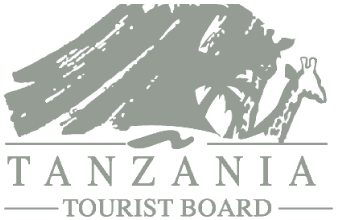Field Guides
1. East African Wildlife (Bradt Travel Guide) by Philip Briggs
The 'East African Wildlife' is the most practical and useful field guide available on the flora and fauna of East Africa. It is a must for every wildlife enthusiast embarking on a safari to Tanzania! This new visitor's guide provides a colorful overview of the region's variety of large mammals together with an insight into their habits and habitats. The book also provides an excellent introduction to the region's less heralded variety of 'small stuff' - including 1,500 bird species and butterflies. Accessible and beautifully illustrated, the guide will appeal both to the first-time visitor and to the serious naturalist seeking a compact volume to carry around. Our favorite aspect of this field guide is the fact that all photos were taken in East Africa and 'stock' photos or photos from other regions in Africa were not used.
2. Wildlife of East Africa by Martin B. Withers and David Hosiking
This handy little field guide is the perfect match for those mainly interested in animal identification and short descriptions on each species behavior and ecology. This is a compact and concise field guide with beautiful color photographs and descriptions identifying each animal. The 'Wildlife of East Africa' includes mammals, birds, plants and reptiles and focuses on East Africa making it extremely useful while out on safari in Tanzania, Kenya or Uganda. The color pictures and easy to read descriptions are extremely helpful in terms of identifying common animal species that are similar in appearance. For example, there are several species of regularly encountered antelopes that look similar to each other at first glance including the Grant's Gazelle, Thomson's Gazelle, Steenbok, Oribi, Reedbuck, Klipspringer, Duiker and Dik-Dik. Your safari guide will certainly be impressed as you call out each species with the use of this handy little field guide by your side.
3. The Safari Companion by Richard D. Estes
The 'Safari Companion' is the most comprehensive field guide on African mammals. A detailed analysis is provided on each mammal (excludes birds, reptiles and plants) that you will encounter on your safari. Black and white sketches and descriptions are provided for each animal as well as information on each particular animal's social / mating system, reproduction, communication and ecology. There is also a superb and fascinating discussion on each animal's behavior. A downside with this guide is the poor black and white sketches with regards to identifying common animal species. Another minor problem with the 'Safari Companion' is that it covers all of Africa and can be a bit complicated for first time visitors to East Africa.
Research Books and Field Studies
1. Serengeti: Dynamics of an Ecosystem by A.R.E. Sinclair and M. Nortons-Griffiths
2. Serengeti II: Dynamics, Management and Conservation of an Ecosystem
The 'Serengeti' and 'Serengeti II' combine to form the authoritative literature on the Serengeti Ecosystem, which is the most famous, abundant and diverse ecosystem in all of Africa. Both are a product of over 40 years of research and a collaboration of dozens of field biologists and researchers who have spent their lives studying and documenting just about everything (from dung beetles to lions) that inhabits the Serengeti. The books are a collection of short essays including such topics as the wildebeest, zebra and gazelle migration, the Serengeti environment, plants and herbivory, herbivores and predation, predator demography and behavior and conservation and management. The 'Serengeti' and 'Serengeti II' are best purchased together and are highly recommended.
3. The Serengeti Lion by George B. Schaller
This legendary and groundbreaking book details George Schaller's observations and conclusions from his long-term study of the Serengeti lions from 1966 to 1969. Schaller's study was groundbreaking in that he was able to explain many aspects of lion society. However, the most important aspect of his study was that his findings proved that predators (mainly lion, hyena, leopard, cheetah and wild dog) did not limit the population sizes of their prey species. This may seem a minor conclusion but keep in mind that for decades park game wardens used to shoot predators, particularly wild dogs, as it was believed that they would decimate prey populations (wildebeest, zebra, gazelles, etc.) if not eradicated. We now know, as Schaller clearly showed in his study, that it is not necessary to regulate carnivores to ensure large populations of herbivores. Most herbivore populations are indeed limited by dry season forage and not carnivores.
The Serengeti lions that inhabit the area around Seronera have been continuously studied since 1966 when Schaller began his work. Though there have been significant changes to the Serengeti since the 1960's (most notably the increase in wildebeest and the disappearance of the disease Rinderpest), the research and conclusions remain valid and the book is still the authoritative literature on the Serengeti lion. You will find references to Schaller's work in just about every subsequent research study in the Serengeti. The pride structure, behavior and hunting tactics and much more are described in detail. Additionally, a few of the Serengeti's other predators are described in lesser detail including the Leopard, Cheetah, Hyena and the now locally extinct Wild Dog. 'The Serengeti Lion' is a must read for every lion fanatic.
4. Cheetahs of the Serengeti Plains by T.M. Caro
T.M. Caro documents nine years of research (1980 - 1989) in this book about the cheetahs that inhabit the Serengeti National Park. This Serengeti cheetah is notably different then the cheetahs that inhabit other parts of Africa in that the majority of the cheetahs found in the Serengeti are migratory. Most of the Serengeti cheetahs follow the Thomson's gazelle migration from the western and central woodlands in the dry season to the eastern and southern plains during the green season. This book describes in detail cheetah behavior, reproduction, range, hunting tactics and conservation. This is a superb book and reading it will greatly enhance your enjoyment of cheetah viewing.
5. The Spotted Hyena - A Study of Predation and Social Behavior by Hans Kruuk
Hans Kruuk lived in the Serengeti between 1964 and 1968 and spent 4- years studying spotted hyenas in the Serengeti National Park as well as the nearby Ngorongoro Crater. This was the first study ever conducted on hyenas and remains the most comprehensive and authoritative literature on hyenas. This is a wonderful book and the discussions about hunting behavior, clan society and mating rituals are captivating. Spotted hyenas are fascinating animals and completely misunderstood. Hans Kruuk's well-written book offers a glimpse into the hyena's mysterious life and his findings are enlightening.
Hyenas are capable hunters and in fact this study showed that they killed 70% of their food in the Serengeti and an astonishing 96% of their food in the Ngorongoro Crater. Hyenas are the most successful predator in the Serengeti and truly fascinating to watch if you know their behavior. They live in complex societies like lions called clans but the females are at the top and are actually larger than males and possess external genitalia. Most people tend to think of them as scavengers. Though they are well adapted to scavenging, they are more likely to kill their own food (even adult zebras) and lions actually scavenge more from hyenas than vice versa.
Safari Memoirs & Journals
1. My Serengeti Years - Memoirs of an African Game Warden by Myles Turner
'My Serengeti Years' is arguably the best book ever written about the Serengeti. This is a wonderful first hand account of the Serengeti from the unique perspective of an ex big game hunter turned stern conservationist. Myles' account of his 16 year tenure as chief game warden of the Serengeti is packed full of fascinating wildlife stories including close encounters with infuriated rhinos, fearless honey badgers and deadly poachers. It's hard to resist the pull of the Serengeti once you've finished 'My Serengeti Years' and you will undoubtedly be planning your Serengeti safari or returning for another one shortly thereafter.
Myles Turner was chief game warden of the Serengeti National Park from 1956 to 1972. Myles Turner took on his post just after the inception of the park. These early years were among the darkest and most uncertain days in the Serengeti's history. Poaching was widespread, unchecked and threatened the survival of the entire ecosystem. Due to Myles Turner's untiring and dedicated conservation and anti-poaching efforts, the great herds of Africa's finest wildlife sanctuary still roam free today. Norman Myers eloquently writes, 'Myles Turner epitomized Serengeti. Others visited it, he was part of it; others observed it, he knew it; others analyzed it, he comprehended it; others enjoyed it, he loved it.'
2. Serengeti Home by Kay Turner
'Serengeti Home' is another must read before, during or after your safari and is a great companion book to Myles Turner's 'My Serengeti Years'. Kay Turner lived in the Serengeti with her husband, Myles Turner, who was chief game warden for 16 years. Kay Turner's book details her adventures including raising her family in the Serengeti (chapter is charming titled 'Bush Babies'), humorous stories about her wild pets including 'Chuta' the bat-eared fox, 'Gussie' the grants gazelle and 'Prince and 'Pixie' the serval cats and wild adventures both living and going on safari in the Serengeti. The chapter about camping in the Serengeti will undoubtedly have you excited for your private camp.
One eloquent passage reads 'After a long day out in the sun amongst the game, we would return to camp... then, stretching our feet towards the campfire with drinks in hand, we enjoyed seeing the sun sink slowly towards the horizon and the stars appear in the thousands, until it seemed there was no space in the sky for more. The sky at night felt close on those treeless plains, and it glowed with a soft and enveloping radiance that inspired a feeling of harmony with the universe. We were alone in that immense open country, and it seemed the stars displayed their brilliance solely for us. After an early supper, we would be lulled to sleep by the rhythmic sound of the wildebeest bleating, interspersed by the off-key moan of a hyena or the plaintive cry of a stone curlew'.
3. Into Africa by Craig Packer
Craig Packer, professor in the Department of Ecology at the University of Minnesota and well-known field biologist, has been conducting research in Tanzania since 1972. He began his work studying chimpanzees and baboons at Gombe National Park with Jane Goodall. Later he became director of the Serengeti Lion Project and, following in the footsteps of George Schaller, continued and expanded the lion research in the Serengeti National Park.
In this outstanding book, Craig Packer provides a day-by-day account of his latest 52-day trip to Tanzania where he orients the new Serengeti lion researchers for their turn at cracking the many mysteries of lion behavior. Packer grapples with several unanswered questions on lion behavior and draws fascinating conclusions on the most interesting aspects of the lion pride society. The biggest mystery is why do lions form groups (prides) while all other cat species are solitary. The traditional belief was that lions came together for cooperative hunting. It was thought that two or more lions would surely have more to eat if they hunted together and thus they formed prides. Craig Packer's lion study disproved this theory as he showed that solitary lions feed just as well as lions in a pride by measuring food intake of hundreds of lions over a 2-year study period. Furthermore, Packer deduces the actual cause of sociality among lions and it may surprise you. Read pages 90-100 to solve the mystery!
4. Serengeti Shall Not Die by Bernhard and Michael Grzimek (pronounced Jimkek)
Bernhard and Michael Grzimek (father and son) conducted a pioneering field survey of the Serengeti and Ngorongoro Conservation Area from 1957 to 1959. This was the first scientific study conducted in the Serengeti and the film they created entitled 'Serengeti Shall Not Die' created awareness for one of the world's most important wildlife areas and spurred a much needed conservation movement to help preserve the Serengeti. Sadly, Michael Grzimek was killed when his plane collided with a vulture above the Salei plains (between the Serengeti and Ngorongoro Crater) on October 1, 1959 towards the end of the filming. There is a stone marker and plaque paying tribute to Michael Grzimek on the rim of the Ngorongoro Crater.
5. The Tree Where Man Was Born by Peter Matthiessen
'The Tree Where Man Was Born' is a superbly written journal by Peter Matthiessen describing his safari through East Africa including the Serengeti National Park, Ngorongoro Conservation Area and Lake Manyara. Matthiessen presents enlightening discussions about the history of East Africa as well as detailing his adventures on safari with George Schaller, Myles Turner and Iain Douglas-Hamilton. Especially interesting are his discussions and interactions with two fascinating cultures in Tanzania including the Maasai pastoralists and the Hadza hunter-gatherers.
6. Among the Elephants by Iain and Oria Douglas-Hamilton
'Among the Elephants' details the first long-term study of elephants in the wild. The study was conducted in Lake Manyara National Park, which contains the highest concentration of elephants in Africa. Iain and Oria Douglas-Hamilton spent several years living in Lake Manyara and gradually became accepted by many of Manyara's estimated 600 elephants. Elephant behavior and biology are discussed in detail along with Iain and Oria's adventures in Manyara as they become intertwined in the trials and tribulations of various resident elephant families. This pioneering field study is a must read for any elephant enthusiast and will greatly increase your enjoyment when elephant watching in Lake Manyara National Park.
History
1. The Penguin Atlas of African History by Colin McEvedy
'The Penguin Atlas of African History' provides an easy to read summary of Africa's fascinating history from the first appearance of Man to the development of modern African society. The book begins with the supercontinent Pangaea some 175 million years ago and describes the formation of the African continent and its unique geological features including the Rift Valley. The book then discusses the development of hominids and the great apes on either side of the rift valley including the archaeological finds at Olduvai Gorge. The development of modern African history is also wonderfully detailed in a simple and clear format (not an easy achievement) including the exploration of Africa and the various kingdoms and empires. Finally, European colonialism of Africa is discussed as well as the subsequent independence for the various countries of Africa. With over fifty illustrative maps, this is a great little handbook and a quick and enlightening read.
Other Books
1. Lions Share - The Story of a Serengeti Pride by Jeanette Hanby
'Lions Share' is a charming book written from the unique perspective of the members of a Serengeti lion pride. Jeanette Handy, a field biologist, worked for the Serengeti Lion Project with her husband David Bygott in the 1970s. They spent several years following and studying lions in the Serengeti National Park. One particular pride called the Sametu lion pride captivated their interest and this book is the story of the Sametu pride including how it came into existence and the struggles the individual lions endured protecting their territory and raising cubs. This is a wonderful book and an ADS favorite.
The Sametu Lion Pride (named after the Sametu Kopjes in the eastern Serengeti) is a powerful plains pride that somehow manages to squeeze out an existence on the harsh Serengeti Plains. Life is great in the green season when the wildebeest migration is in 'town' but during the dry season it is a daily struggle and the pride is forced to subsist on sparse plains game including warthog, gazelle and the occasional topi. Though the 'Lions Share' was written in the 1970s, the Sametu pride is still intact today and the great, great granddaughters of the lions written about in the book still rule the Sametu area. As of fall 2005, the Sametu pride consisted of six adult females, twelve cubs of various ages and three resident males. If you do read this book, have your driver-guide take you to the Sametu Kopjes (45-minute drive southeast from Seronera) and with a little luck you will spot some members of the Sametu Pride.
2. Swahili Phrase Book by Lonely Planet
Picture Books
1. Serengeti A Kingdom of Predators by George Schaller
2. Nomads of the Serengeti by Robyn Stewart
3. The Serengeti's Great Migration by Carlo Mari and Harvey Croze
4. The Great Migration by Jonathan Scott
5. African Odyssey by Anup and Manoj Shah
Children's Books
1. We All Went on Safari: A Counting Journey through Tanzania by Laurie Krebs
2. Serengeti - Information, Puzzles & Games by Jeannette Hanby & David Bygott
Movies
Africa - The Serengeti.
'Africa - The Serengeti' is a stunning IMAX wildlife documentary filmed in the Serengeti National Park, Ngorongoro Crater and Maasai Mara. The documentary, narrated by James Earl Jones, chronicles the Serengeti's great wildebeest migration and also beautifully captures the Ngorongoro Crater.
Superpride - A story of a large lion pride in the Central Serengeti filmed from May 2007 to July 2007.
NOTE: Most of the above books and movies are available new or used on Abebooks.com or Amazon.com.













